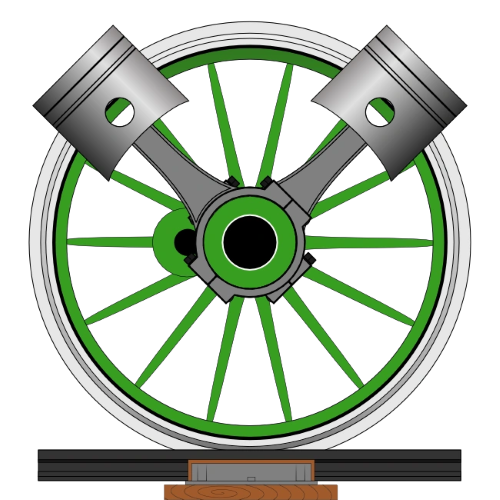The EMD; Electro Motive Division, GP30 is a type of four-axle 2,250 hp diesel locomotive built from 1961 to 1963 with 948 built including 40 cabless units built for the Union Pacific.
Only two were built for Canadian railroads, while the rest were built for American-based railroads (yet, many were eventually exported to Canada, and various countries in the Latin American region).
Many still exist and are still in service, but most have been scrapped and rebuilt, and no longer serve as mainline "power" for modern railroads.
History[]
The EMD GP30 was considered to be a transition between two generations of North American diesel locomotives.
Originally a successor to
the GP20, the GP30 began as a revolution for modern motive power which was also originally intended to compete with GE's 2,500 hp U25B; which (ironically), the U25B itself wasn't fully demonstrated or complete in-time, and GE originally attempted to outsell or outsmart EMD's rumored development of a powerful (at the time) 2,250 hp diesel locomotive. But thanks to EMD's assistance from their original owners and affiliates (General Motors; GM), EMD was able to develop an even more powerful type of diesel locomotive more powerful than it's predecessors, being the EMD GP30; having it's own unique design exclusively built and designed from GM and other automobile designers. The U25B's attempt to dominate over EMD's status, however; was a complete and total failure (although the U25B was a complete success, it didn't prove to be nearly as popular with most railroads), thus the success and domination of EMD's GP30 (though, the U25B served as a useful "booster" unit for compatibility).
Although an initial success which proved to be popular with most American railroads, and originally intended for heavy-duty and/or high-speed revenue or general mainline freight service for freight trains, the GP30 had a very short production run due to the immediate development and experimentations with numerous later succeeding types or models: the GP28 and GP35 Though successful at first; the GP35 eventually suffered numerous mechanical failures and other issues which eventually led to the development of the much-improved GP40, and furthermore led to the development of the GP38; as a result of the GP28's low-popularity with customers. Many railroads which owned their GP30 units used them on general revenue freight service until the mid-1970's; when six-axle diesel locomotives were in the process of becoming more dominate for revenue freight. Thus, the retirement for such units commenced and continued on into towards the turn of the century in 1999-2000; which truly were the final years of usage of the GP30 on revenue freight trains throughout various railroads the United States.
As of today, the only surviving GP30 units on US Class 1 freight railroads have either been rebuilt into other units such as the GP39, or turned into road slugs. Many are still in service on smaller railroads, but no longer serve their original purpose as mainline freight engines.
Trivia[]
- The GP30 was originally intended to be named the GP22 because of it's 2,250 horsepower. EMD changed it to GP30 claiming it had 30 improvements over the previous GP20, as a marketing ploy to conceal the fact it only had 2,250 horsepower compared to GE's 2,500 HP U25B.
- Thirteen Union Pacific GP30Bs were delivered with steam generators for passenger service.
- Most of BNSF's fleets of predecessor GP30 units have been rebuilt into GP39E and GP39-2E (or GP39E-2) units.
- CSX's GP30 fleets were converted into "road-slugs."
- Railserve has rebuilt a GP30 into a 1,200 HP Genset.
